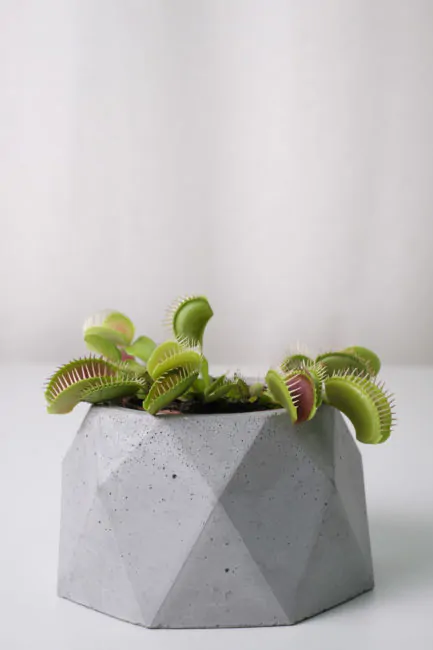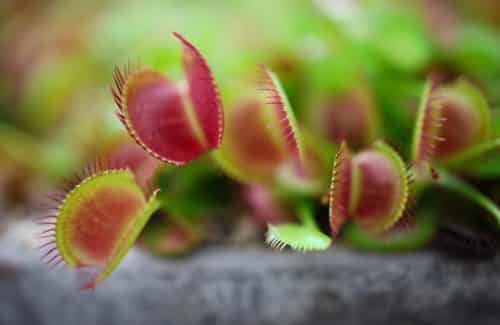How to care for Venus Flytrap indoors
The Venus Flytrap is a carnivorous plant highly prized for its unique insect-catching mechanism. While it is not ideal for beginners due to its specialized care requirements compared to typical indoor plants, it is still relatively easy to grow. In the following sections, we will explore its care specifics and offer some helpful tips.
Origin
In its natural habitat, the Venus Flytrap grows wild around swamps in North and South Carolina. In this environment, the soil is wet, acidic and poor in nutrients, so the plant has developed ingenious ways to capture insects and ensure its supply of nutrients and nitrogen.
How and how often do we water?
Venus needs moist and acidic soils. Moisture is of great importance for this plant. We must provide it with a humidity of at least 60%. Being sensitive to the chemicals and minerals in the water, we recommend that you only use filtered, distilled or rainwater. Watering is done regularly, keeping the soil constantly slightly moist.
More or less light?
As for light exposure, you should know that they prefer a good 12 hours of bright indirect light daily. Find him a suitable place where he can receive this quantity. If it does not have enough light, the plant will let you know and you will notice that the leaves make small traps or are deformed.
Feeding
As a carnivorous plant, the Venus Flytrap thrives best in an area where it can catch its own insects. If it doesn’t have access to natural prey, you can assist by feeding it small flies, mosquitoes, spiders, or ants. Using tweezers, place the insect directly on the surface of the trap and gently position it until it touches the trigger hairs inside. Remember not to overfeed, as each trap has a limited number of times it can open and close during its lifespan.

Rest period
When the level of sunlight decreases, from November to March, the plant goes through a period of rest. It will lose its leaves and look gloomy. This is normal and should not alarm us. It actually lives through its underground rhizomes. The ideal storage place during this period is an unheated one or a closed balcony (with temperatures up to 7 degrees Celsius). Do not compensate with light, because it does not need that much, and watering will be rare. Care will be taken that the pot does not sit in water and that the soil does not dry out completely, but is only slightly moist. Around the spring equinox, when the days start to grow longer, you can start increasing the temperature and light.
Very important!
The plant weakens when we activate the traps too often, in play or out of curiosity. We risk losing it if we overfeed and fill the traps with insects or if we activate them with our fingers or other objects. Resist the temptation to put your fingers in the trap, as this depletes the plant of energy that should be reserved for catching and eating insects. The plant is not toxic to humans or pets.

Tips & Tricks
# Under no circumstances should you fertilize the Venus Flytrap. Fertilization leads to the loss of the plant;
# Choose a soil mix that is more acidic than most houseplant mixes (include peat in the soil mix to acidify the soil);
# If the plant produces flowers, remove them. Flowering leads to seed production, and the whole process will only divert energy from the plant, tiring it out.
We hope these tips help your carnivorous plant thrive and catch plenty of small flies! If you have any further questions, feel free to reach out to us online or visit us at the Orangery, located at 54 M. Kogălniceanu Street.
With love for plants,
Floral Soul

